
18 Best Human Resource (HR) Software 2023
Top-Rated Human Resource Software: A Comprehensive Review
Selecting the right HR software for your organization can be difficult, as there are numerous options available, each with its unique features and benefits. To help you make an informed decision, in no particular order, HRcosts.com has compiled a comprehensive review of the top 18 HR software in the market today.

HR Software 101
HR software, also known as Human Resources software, is a type of software application designed to help organizations manage and streamline their HR operations. It typically includes a range of modules and features that automate and centralize various HR tasks, such as employee information management, payroll and benefits administration, time and attendance tracking, performance management, recruiting and onboarding, training and development, and compliance management.
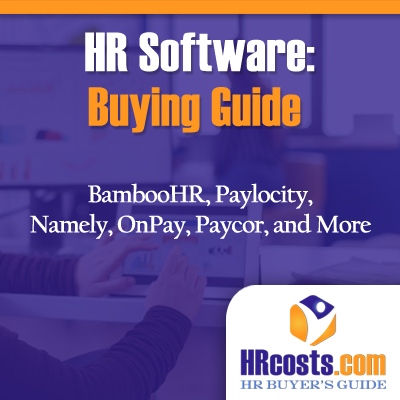
FOR SMALL BUSINESS OWNERS LOOKING TO TAKE A MAJOR HEADACHE OFF THEIR PLATE….
HOW TO GET AN ALL-IN-ONE, PERSONALIZED HR SOLUTION THAT RUNS ON AUTOPILOT
WITHOUT REQUIRING A SECOND OF YOUR TIME…IN JUST MINUTES
Tired of dealing with HR headaches? Outsource your HR functions with an all-in-one solution to handle payroll, legal, benefits, and more with just a single monthly fee. Fortune 500 companies all do this – and now your small business can too.
Criteria for Selecting the Best Human Resource Software
When selecting the best Human Resource (HR) software, we considered various criteria to ensure it meets unique requirements. The following factors were considered when evaluating HR software solutions:
- Functionality: As a major factor in ranking we Identified the features and capabilities that are essential for your organization’s HR needs. Core features may include applicant tracking, onboarding, performance management, time and attendance, payroll, benefits administration, and reporting. Consider the scalability of the software and whether it can grow with your organization.
- User Experience: The software needed to be intuitive, easy to navigate, and user-friendly for both HR professionals and employees. We looked for software that offers a consistent experience across devices and platforms, allowing for seamless access and collaboration.
- Integration: another important ranking factor was that the HR software needed to integrate with other systems in organizations, such as accounting software, ERP systems, and communication tools. This will help streamline processes, reduce errors, and improve data accuracy.
- Customization: The software was expected to offer customization options to tailor the system to your organization’s specific needs. This can include custom workflows, forms, and templates that align with your company’s processes and policies.
- Security and Compliance: The HR software adheres to relevant security standards and data protection regulations such as GDPR, HIPAA, or other industry-specific regulations. The provider should offer regular security updates and have a strong track record of protecting customer data.
- Reporting and Analytics: The software should provide robust reporting and analytics capabilities, enabling HR professionals to make data-driven decisions and track key performance indicators (KPIs).
- Implementation and Support: We examined the level of support provided during the implementation process and ongoing customer support. The software vendor should offer comprehensive training materials, responsive customer service, and regular updates to ensure the system remains current with industry trends and regulations.
- Cost: We evaluate the pricing model and total cost of ownership, including implementation, training, and ongoing maintenance costs. The software provides value for money and fits within your budget.
- Vendor Reputation: The software provider’s reputation is an important ranking factor, including their track record, and customer reviews to ensure they have a history of delivering reliable, high-quality products and services.
- Free Trial or Demo: We consider whether or not the software offered a free trial or demo to assess its usability, features, and performance before making a decision. This helps determine if the solution is a good fit for an organization’s needs.
Here’s our list of the best HR software solutions on the market today:
1. BambooHR:
BambooHR is a leading HR software solution that focuses on streamlining HR processes and simplifying employee management. It offers an intuitive and user-friendly interface that allows for easy onboarding, performance management, and tracking of employee data.
Advantages:
- Comprehensive HR suite with core HR functions
- Easy-to-use interface
- Excellent customer support
- Mobile app available for iOS and Android devices
Disadvantages:
- Limited customization options
- Lacks advanced analytics features
2. Paylocity:
Paylocity is a cloud-based HR software designed to help businesses manage payroll, benefits, and human resources tasks. It provides tools for talent management, time and labor tracking, and compliance management.
Advantages:
- Robust payroll and benefits management features
- Extensive reporting capabilities
- Integration with third-party apps
- Regular software updates and enhancements
Disadvantages:
- Learning curve for new users
- Expensive for small businesses
3. Deputy:
Deputy is an HR software solution that specializes in workforce management, scheduling, and time tracking. It is designed for businesses of all sizes and industries and provides a user-friendly interface and mobile apps for employees and managers.
Advantages:
- Flexible scheduling and time-tracking tools
- Real-time updates and notifications
- Seamless integration with payroll software
- Affordable pricing plans
Disadvantages:
- Limited HR functionality compared to other platforms
- Customer support could be improved
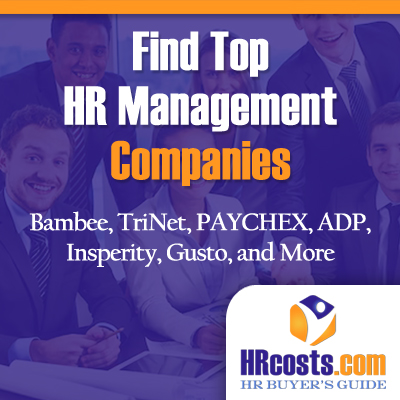
4. Namely:
Namely is an all-in-one HR, payroll, and benefits platform designed for mid-sized businesses. It offers a user-friendly interface and comprehensive features, including talent management, time tracking, and compliance management.
Advantages:
- Full suite of HR tools
- Customizable interface
- Social newsfeed for employee engagement
- Integration with third-party apps
Disadvantages:
- Expensive for smaller businesses
- Occasionally slow customer support response time
5. Monday.com:
monday.com is a work operating system (Work OS) that includes HR functionalities, as well as project management, team collaboration, and process automation. It offers a highly customizable and visually appealing interface.
Advantages:
- Highly customizable and scalable
- Wide range of integrations
- Suitable for various industries
- Intuitive drag-and-drop interface
Disadvantages:
- Not specifically designed for HR management
- Can be overwhelming for new users
6. PAYCHEX:
PAYCHEX is a comprehensive payroll and HR solution provider, offering a range of services such as payroll processing, benefits administration, and HR support. It is designed for businesses of all sizes and industries.
Advantages:
- Full-service payroll and HR solution
- Robust reporting and analytics
- Solid customer support
- Offers a mobile app for payroll processing
Disadvantages:
- User interface could be more intuitive
- Some customers report occasional payroll errors
7. OnPay:
Description: OnPay is a cloud-based payroll and HR software designed for small to medium-sized businesses. It offers a simple and intuitive interface, with features like payroll processing, tax filing, and benefits management.
Advantages:
- Simple and easy-to-use interface
- Transparent pricing
- Unlimited payroll runs
- Excellent customer support
Disadvantages:
- Focus on small and medium-sized businesses Integration with popular accounting software Disadvantages:
- Limited advanced HR features Not ideal for larger organizations with complex needs
8. Paycor:
Paycor is a cloud-based HR and payroll software solution designed for small and medium-sized businesses. It offers a range of features, including payroll processing, time and attendance tracking, benefits administration, and talent management.
Advantages:
- All-in-one HR and payroll solution
- User-friendly interface Customizable reporting and analytics
- Strong customer support
Disadvantages:
- Some features may require additional costs
- Occasional system glitches reported by users
9. Rippling:
Rippling is an all-in-one HR platform that simplifies employee management, payroll, benefits, and IT support. It is best suited for small to mid-sized businesses.
Advantages:
- Streamlined onboarding process
- Integrated payroll and benefits administration
- Easy to set up and manage
Disadvantages:
- Limited customization options
- May not be suitable for large enterprises
10. ADP Workforce Now
ADP Workforce Now is a comprehensive HR management solution designed for medium to large businesses. It offers a wide range of tools for HR, payroll, talent management, and time and labor management.
Advantages:
- Robust reporting and analytics
- Scalable to accommodate business growth
- Excellent customer support
Disadvantages:
- Can be complex for new users
- Expensive compared to other options
11. Retable
Retable is an HR software solution that focuses on talent acquisition and employee engagement. It caters to businesses of all sizes, offering a range of features, including applicant tracking, employee performance tracking, and rewards management.
Advantages:
- User-friendly interface
- Customizable career pages and job postings
- Social media integration for recruitment
Disadvantages:
- Limited payroll integration
- No native mobile app
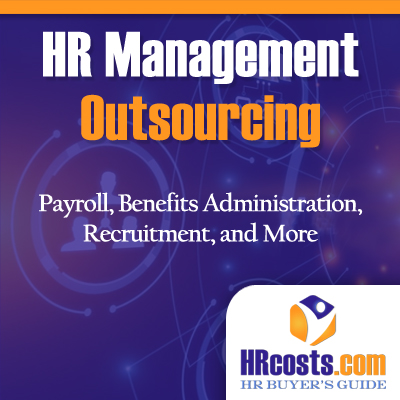
12. Oyster HR
Oyster HR is a global HR platform designed for remote and distributed teams. It offers payroll, benefits, compliance, and talent management tools for businesses operating across multiple countries.
Advantages:
- Supports cross-border payments
- Streamlines compliance with local employment laws
- Excellent for managing remote and international teams
Disadvantages:
- Limited features for in-person workforces
- May not cater to all countries
13. Deel
Deel is a payroll and compliance platform for hiring and managing remote workers worldwide. It simplifies international hiring and payment processes.
Advantages:
- Supports over 150 currencies
- Automated tax and legal compliance
- Streamlined onboarding and contract management
Disadvantages:
- Limited features for non-remote teams
- No talent acquisition or performance management tools
14. UserGuilding
UserGuilding is a learning and development platform for HR departments. It offers tools for onboarding, training, and employee development.
Advantages:
- Interactive training modules
- Customizable learning paths
- Analytics to measure employee progress
Disadvantages:
- Lacks core HR features like payroll and benefits
- Limited integration with other HR software
15. Freshteam by Freshworks
Freshteam is an HR software solution that covers recruiting, onboarding, time-off management, and employee information management. It caters to small and medium-sized businesses.
Advantages:
- Intuitive interface
- Affordable pricing plans
- Integration with other Freshworks products
Disadvantages:
- Limited reporting capabilities
- No native payroll features
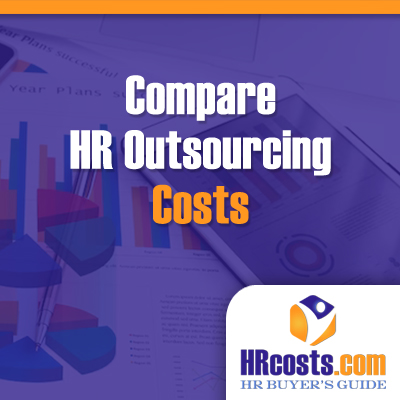
16. UKG Pro
UKG Pro is an end-to-end HR, payroll, and talent management solution for large enterprises. It offers a wide range of features, including workforce management, benefits administration, and analytics.
Advantages:
- Scalable and customizable
- Strong reporting and analytics tools
- Excellent customer support
Disadvantages:
- Steep learning curve
- Expensive for small businesses
17. Connecteam
Connecteam is an all-in-one HR software solution designed for deskless and remote teams. It offers features such as employee scheduling, time tracking, communication, and onboarding.
Advantages:
- User-friendly mobile app
- Customizable workflows and templates
- Affordable pricing plans
Disadvantages:
- Limited advanced HR features
- May not be suitable for large enterprises
18. GoCo
GoCo is a flexible HR software platform that streamlines onboarding, benefits administration, payroll, and time-off management. It is designed for small to medium-sized businesses.
Advantages:
- Easy to use and set up
- Customizable workflows
- Integration with popular payroll providers
Disadvantages:
- Limited advanced reporting features
- No native talent acquisition tools
Conclusion: When it comes to choosing the best HR software for your organization, it is essential to consider your specific requirements and priorities. Each of the solutions mentioned in this review offers a unique set of features, advantages, and disadvantages. Carefully evaluate your needs and the available options to make an informed decision that will ultimately benefit your organization and its employees.
Important HR Software Features to Look For
Important HR Software Features to Look For: Boosting Efficiency and Streamlining HR Processes
Human Resources (HR) software has become an essential tool for organizations to manage their workforce, streamline processes, and maintain compliance. When choosing an HR software solution, it’s crucial to identify the features that align with your company’s needs and objectives. In this article, we will discuss the important HR software features to look for and explain why each one is essential for a modern organization.

1. Applicant Tracking System (ATS)
Why it’s important: An ATS simplifies the recruitment process by automating tasks such as posting job ads, screening resumes, and scheduling interviews. This feature helps HR teams save time, improve the candidate experience, and make data-driven decisions about potential hires. An effective ATS should also integrate with your existing HR software to ensure seamless data transfer and reduce manual data entry.
2. Employee Onboarding and Offboarding
Why it’s important: Proper onboarding and offboarding processes ensure a smooth transition for new employees and those leaving the organization. HR software that includes customizable onboarding and offboarding checklists, digital forms, and automated workflows can help HR teams manage these processes efficiently. This feature contributes to employee satisfaction, engagement, and retention while maintaining compliance with labor laws and regulations.
3. Time and Attendance Management
Why it’s important: Accurate time and attendance tracking is crucial for payroll processing, leave management, and workforce planning. HR software with time and attendance features allows employees to clock in and out, request time off, and view their schedules. Additionally, this feature should offer managers real-time insights into employee attendance, overtime, and leave balances, enabling them to make informed decisions and maintain compliance.
4. Performance Management
Why it’s important: Performance management is essential for employee growth, engagement, and retention. HR software that includes goal-setting, performance reviews, and 360-degree feedback can help streamline the performance management process. This feature allows HR teams and managers to track employee progress, provide feedback, and recognize achievements, leading to a motivated and high-performing workforce.
5. Learning Management System (LMS)
Why it’s important: An LMS is critical for employee training and development, allowing organizations to create, deliver, and track training programs. An integrated LMS within HR software ensures that employee training records are easily accessible and up to date. This feature can help improve employee skills, productivity, and compliance with industry standards and regulations.
6. Payroll Integration
Why it’s important: Payroll management can be time-consuming and error-prone when done manually. HR software with payroll integration simplifies the process by automatically calculating salaries, deductions, and taxes based on time and attendance data. This feature helps reduce errors, save time, and ensure compliance with tax and labor laws.
7. Benefits Administration
Why it’s important: Managing employee benefits can be complex, especially in organizations with diverse benefit packages. HR software that includes benefits administration features enables HR teams to streamline the enrollment process, track eligibility, and maintain compliance with regulations. This feature can help improve employee satisfaction by providing easy access to benefits information and ensuring timely enrollment.
8. Reporting and Analytics
Why it’s important: Data-driven decision-making is essential in today’s competitive business environment. HR software with robust reporting and analytics capabilities can help HR teams and managers make informed decisions based on real-time insights. This feature can aid in identifying trends, addressing workforce challenges, and optimizing HR processes for better efficiency and effectiveness.
Choosing the right HR software with the essential features listed above can help your organization streamline processes, improve employee satisfaction, and maintain compliance. By investing in a comprehensive HR software solution, you can better manage your workforce and contribute to your organization’s overall success.
10 Questions You Should Ask Before Buying HR Software
If you’re strongly, considering purchasing HR software, here are 10 critical questions you should ask (and why should ask) before moving forward.
- What are the core features of the software, and do they align with our organization’s needs? Understanding the core features of the HR software will help you assess whether it addresses your organization’s unique requirements, such as recruitment, performance management, learning management, payroll, and benefits administration.
- Is the software scalable to accommodate our organization’s growth? Scalability is crucial to ensure that the software can support your organization as it expands, with the ability to handle increasing data volume and the addition of new employees, departments, and locations.
- What is the total cost of ownership (TCO) of the software? Consider the purchase price, ongoing subscription fees, implementation costs, training, customization, and support to determine if the software is within your budget and if it provides a reasonable return on investment (ROI).
- How user-friendly is the software, and what is the learning curve for employees? User-friendliness is essential for quick adoption and efficient use of the software. A steep learning curve could result in a slow rollout and decreased productivity during the initial implementation phase.
- What level of customer support does the vendor offer? Responsive and knowledgeable customer support is crucial for resolving issues, receiving guidance, and ensuring a smooth experience with the software. Assess the availability of support channels (email, phone, chat), response times, and support resources (knowledge base, forums).
- How secure is the software, and what measures are in place to protect sensitive employee data? Data security is paramount for HR software, as it stores sensitive employee information. Ensure that the vendor complies with relevant data protection regulations and has robust security measures, such as encryption, access controls, and regular security audits.
- Can the software be customized to fit our organization’s specific needs and workflows? Customization options allow the software to be tailored to your organization’s unique processes and requirements, increasing efficiency and user satisfaction.
- Does the software integrate with our existing systems and third-party applications? Integration capabilities are essential to ensure seamless data flow between your HR software and other systems, such as payroll, accounting, and project management tools. This can save time, reduce errors, and streamline workflows.
- What is the implementation process and timeline? Understanding the implementation process and the expected timeline helps you plan and allocate resources effectively to minimize disruption to your organization.
- Can you provide references or case studies from clients in our industry or of a similar size? References and case studies can give you insights into how the software performs in real-life situations, as well as the level of satisfaction among existing clients, helping you make a more informed decision.
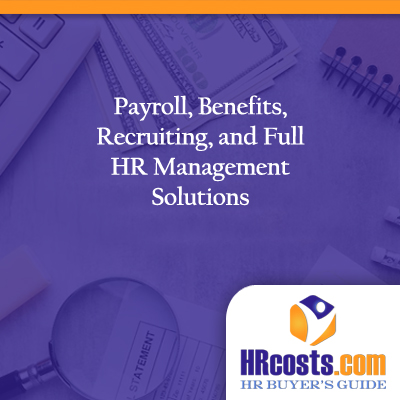
Human Resource Software Trends to Watch in 2023
As we venture deeper into 2023, the human resources (HR) industry is continuously evolving and adopting new technology to streamline processes and improve overall employee management. HR software solutions have become indispensable for businesses looking to stay ahead of the curve and foster a healthy work environment. In this article, we explore the top human resource software trends to keep an eye on this year.
1. Artificial Intelligence and Machine Learning
Artificial intelligence (AI) and machine learning (ML) are no longer just buzzwords. They have become integral components of HR software, automating repetitive tasks and providing insightful data analysis. In 2023, we can expect AI-driven solutions to play a more significant role in recruitment, employee engagement, and performance
management. ML algorithms can assist in identifying patterns in employee behavior, enabling HR professionals to make informed decisions and offer personalized support.
2. Virtual Reality Onboarding and Training
Virtual reality (VR) is revolutionizing the way organizations onboard and train their employees. Immersive VR experiences offer a more engaging and interactive approach, making the learning process more enjoyable and efficient. In 2023, HR software will increasingly integrate VR capabilities, allowing companies to create virtual environments for employee training, team-building exercises, and even remote workspaces.
3. Employee Wellness and Mental Health Support
The global pandemic has underscored the importance of employee wellness and mental health. As a result, HR software solutions in 2023 are focusing on providing integrated support for employees’ well-being. Expect to see HR platforms offering built-in mental health resources, stress management tools, and personalized wellness programs to promote a healthy work-life balance.
4. Remote Work and Collaboration Tools
Remote work is here to stay, and HR software in 2023 is adapting to this new reality. Modern HR platforms are integrating communication and collaboration tools that enable seamless coordination among remote teams. These tools, such as video conferencing, instant messaging, and project management software, help maintain team cohesion and productivity despite geographical barriers.
5. People Analytics
Data-driven decision-making is becoming increasingly important in the HR industry. People analytics refers to the collection and analysis of employee data to identify patterns, trends, and insights that can be used to improve HR processes. HR software will continue to refine people analytics capabilities, providing organizations with actionable insights to drive better talent management, employee engagement, and overall workforce efficiency.
6. Diversity, Equity, and Inclusion (DEI) Initiatives
In recent years, DEI has taken center stage in the corporate world, and HR software is reflecting this shift in priorities. HR platforms are incorporating features that help organizations track and measure diversity metrics, identify unconscious bias, and create inclusive hiring and promotion processes. In 2023, expect to see DEI features becoming standard components of HR software solutions.
The human resource software landscape is constantly evolving, with innovative technologies shaping the industry’s future. In 2023, HR professionals should keep an eye on these emerging trends to stay ahead of the curve and foster a thriving work environment. By leveraging AI, VR, employee wellness programs, remote work tools, people analytics, and DEI initiatives, organizations can optimize their HR processes and unlock their workforce’s full potential.
